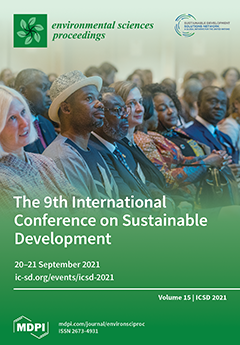Open AccessProceeding Paper
Localizing the 2030 Agenda at the Regional Level through the European Cohesion Policy: An Application to the Region of Sardinia
by
Laura Cavalli, Sandro Sanna, Mia Alibegovic, Filippo Arras, Sabrina Boe, Gianluca Cocco, Edward Cruickshank, Luca Farnia, Emanuela Manca, Luisa F. Mulas, Marco Onnis, Sandro Ortu, Ilenia G. Romani and Marta Testa
Cited by 3 | Viewed by 2873
Abstract
The 2030 Agenda represents a natural framework to guide the post-COVID recovery process. However, the assessment of the effectiveness of sustainable development-oriented policies is still a challenge, and addressing this problem is now more urgent than ever. Fondazione Eni Enrico Mattei and the
[...] Read more.
The 2030 Agenda represents a natural framework to guide the post-COVID recovery process. However, the assessment of the effectiveness of sustainable development-oriented policies is still a challenge, and addressing this problem is now more urgent than ever. Fondazione Eni Enrico Mattei and the Autonomous Region of Sardinia launched a research project aimed at developing a model to assess the extent to which the operational programs co-financed by the EU under the Cohesion Policy are sustainable in terms of SDGs. The method developed allows policymakers to direct spending toward investments to better pursue the 2030 Agenda targets. The paper presents the key features of the model and its results applied in the Sardinian context.
Full article
►▼
Show Figures



